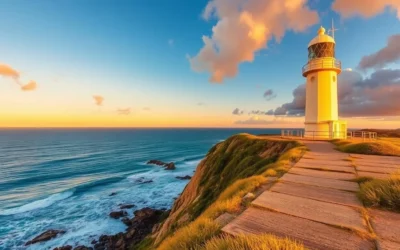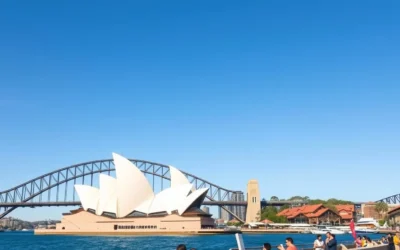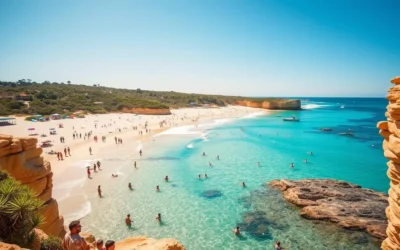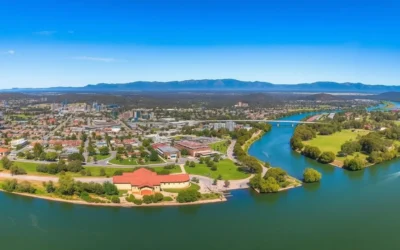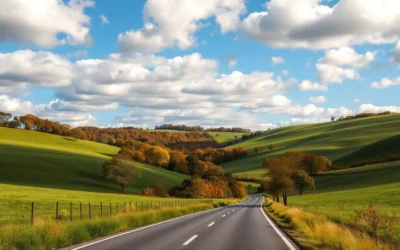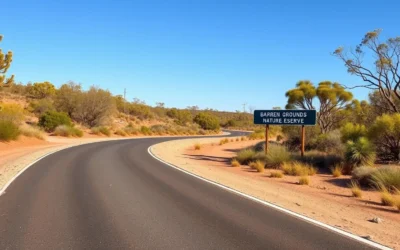Did you know that Burning Mountain Nature Reserve is home to the world’s oldest known coal seam fire, burning continuously for at least 5,500 years? This remarkable natural phenomenon in New South Wales creates an otherworldly landscape where smoke perpetually rises from the ground. Unlike any other place in Australia, this unique reserve offers visitors the rare opportunity to witness a mountain that’s literally smoldering from within, creating a fascinating geological spectacle that has captivated both Aboriginal peoples and European settlers for centuries.
Getting There & Planning Your Journey
Burning Mountain Nature Reserve is located approximately 298 km north of Sydney and 25 km north of Scone in the Upper Hunter region of New South Wales. The reserve sits just off the New England Highway, making it relatively accessible for travelers exploring this part of Australia.
By Air
The closest major airports are in Newcastle (about 170 km away) and Sydney (298 km). From either airport, you’ll need to arrange ground transportation to reach the reserve.
Find the Best Flights to New South Wales
Compare prices from major airlines and book your flight to explore Burning Mountain Nature Reserve.
By Car
From Sydney, take the M1 Pacific Motorway north, then follow the New England Highway (A43) toward Scone. The reserve is well-signposted on the highway, approximately 25 km north of Scone. The drive takes about 3.5 hours from Sydney.
By Public Transport
While possible, reaching Burning Mountain by public transport is challenging. Take a train from Sydney to Scone, then arrange a taxi for the final 25 km. For convenience and flexibility, a rental car is highly recommended.
Best Time to Visit & Weather Tips

The reserve is accessible year-round, but each season offers a different experience. The most comfortable time to visit is during autumn (March to May) and spring (September to November) when temperatures are mild, typically ranging from 15°C to 25°C (59°F to 77°F).
Seasonal Considerations
- Summer (December-February): Hot with temperatures often exceeding 30°C (86°F). Start your hike early in the morning to avoid midday heat.
- Autumn (March-May): Mild temperatures and less crowded. Ideal for comfortable hiking.
- Winter (June-August): Cooler with temperatures between 5°C to 15°C (41°F to 59°F). The smoke from the underground fire is more visible in cooler weather.
- Spring (September-November): Pleasant temperatures and wildflowers in bloom, making it visually appealing.
Weather Preparation
- Always check weather forecasts before visiting
- Bring sun protection year-round (hat, sunscreen, sunglasses)
- Carry water regardless of season (no drinking water available on site)
- Pack a light jacket even in summer as temperatures can drop in the evening
- Wear sturdy footwear suitable for uneven terrain
The reserve may close during extreme weather conditions or high fire danger periods. Always check the NSW National Parks website for any alerts or closures before your visit.
Getting Around Locally
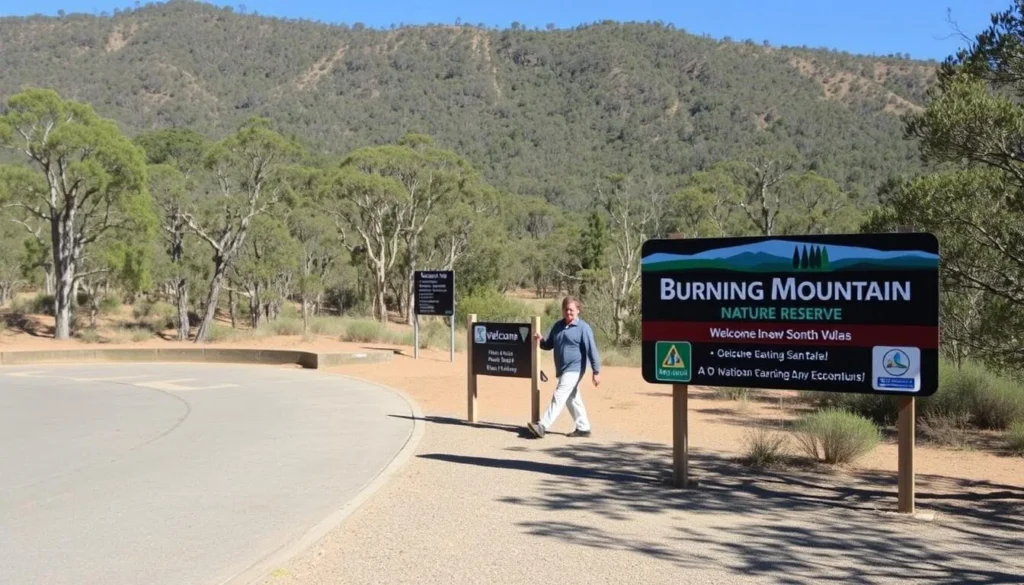
The Burning Mountain Nature Reserve is relatively small at 36 acres, and the main attraction is accessible via a well-maintained walking track. Here’s what you need to know about navigating the area:
Within the Reserve
- The main walking track is a 4 km (2.5 mi) return journey that takes approximately 1-2 hours to complete
- The trail is clearly marked with informative panels explaining the geological phenomenon and Aboriginal heritage
- Some sections have steps and moderate inclines, requiring reasonable fitness
- Stay on designated paths to protect the environment and for your safety
Exploring the Surrounding Area
To fully experience the Upper Hunter region, having your own transportation is essential. The nearby towns of Scone, Murrurundi, and Muswellbrook offer additional attractions and amenities.
Explore at Your Own Pace
Rent a car to discover Burning Mountain Nature Reserve and the beautiful Upper Hunter region on your own schedule.
If you’re staying in the area for several days, consider visiting other nearby natural attractions like Wingen Maid Nature Reserve, Towarri National Park, and the charming historic towns in the region.
Where to Stay
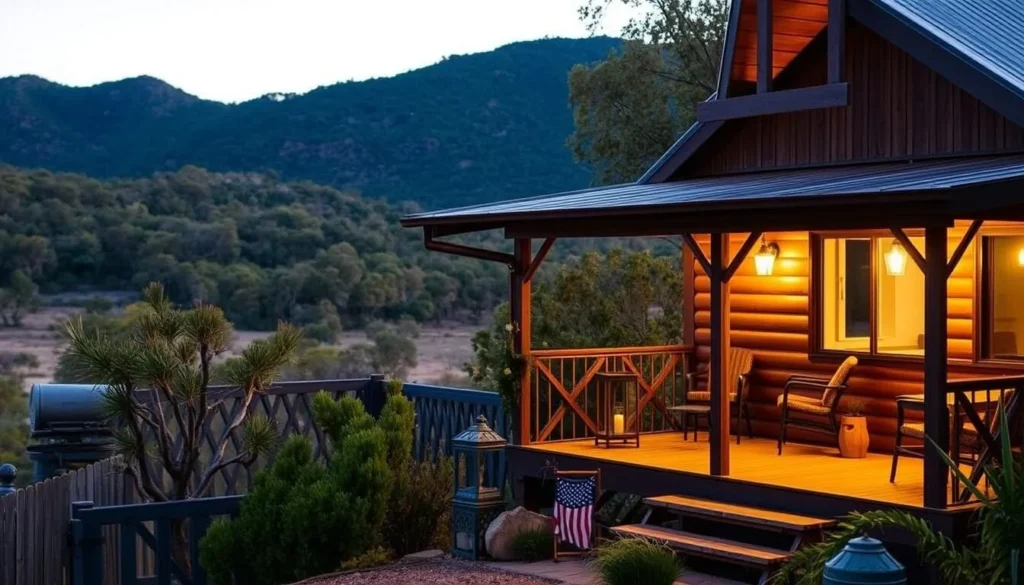
While there’s no accommodation within Burning Mountain Nature Reserve itself, several options are available in the surrounding area to suit different preferences and budgets:
Scone (25 km south)
As the closest town of significant size, Scone offers the widest range of accommodation options:
- Motels and hotels for comfortable, convenient stays
- Charming bed and breakfasts with local hospitality
- Self-contained apartments for longer stays
- Access to restaurants, shops, and other amenities
Murrurundi (15 km north)
This picturesque historic town is slightly closer to the reserve:
- Boutique accommodations in heritage buildings
- Country pubs with character and history
- Smaller selection but more authentic country experience
- Artistic community with galleries and cafes
Rural Stays
For a more immersive experience in the Australian countryside:
- Farm stays offering authentic rural experiences
- Secluded cabins with stunning views of the Liverpool Range
- Eco-retreats focusing on sustainability
- Opportunity to experience country hospitality
Find Your Perfect Stay Near Burning Mountain
Browse and book accommodations in Scone, Murrurundi, and surrounding areas for your visit to Burning Mountain Nature Reserve.
Accommodation in the region can be limited, especially during peak tourist seasons and local events like the Scone Horse Festival. It’s advisable to book well in advance to secure your preferred option.
Dining & Local Cuisine

There are no dining facilities within Burning Mountain Nature Reserve, so it’s essential to plan your meals accordingly. The reserve has picnic areas where you can enjoy packed lunches, but you’ll need to bring your own food and water.
Nearby Dining Options
Scone
Known as the “Horse Capital of Australia,” Scone offers the widest variety of dining options:
- Country bakeries with fresh pies and pastries
- Cafés serving excellent coffee and breakfast
- Pubs offering hearty Australian meals
- Restaurants featuring local produce and wines
Murrurundi
This charming historic town has a smaller but quality selection:
- Artisan cafés with homemade treats
- Historic pubs serving classic Australian fare
- Small restaurants with seasonal menus
- Local bakery for fresh bread and pastries
Local Specialties
The Upper Hunter region is known for its excellent produce and culinary offerings:
- Premium beef from local farms
- Fresh produce from the fertile Hunter Valley
- Award-winning wines from nearby vineyards
- Artisan cheeses and dairy products
- Bush tucker inspired dishes incorporating native ingredients
Visitor Tip: Pack a picnic lunch to enjoy at the designated areas in the reserve. Alternatively, grab takeaway from one of the bakeries or cafés in Scone or Murrurundi before your visit. Don’t forget to bring plenty of water, especially during warmer months!
Attractions, Sightseeing & Activities
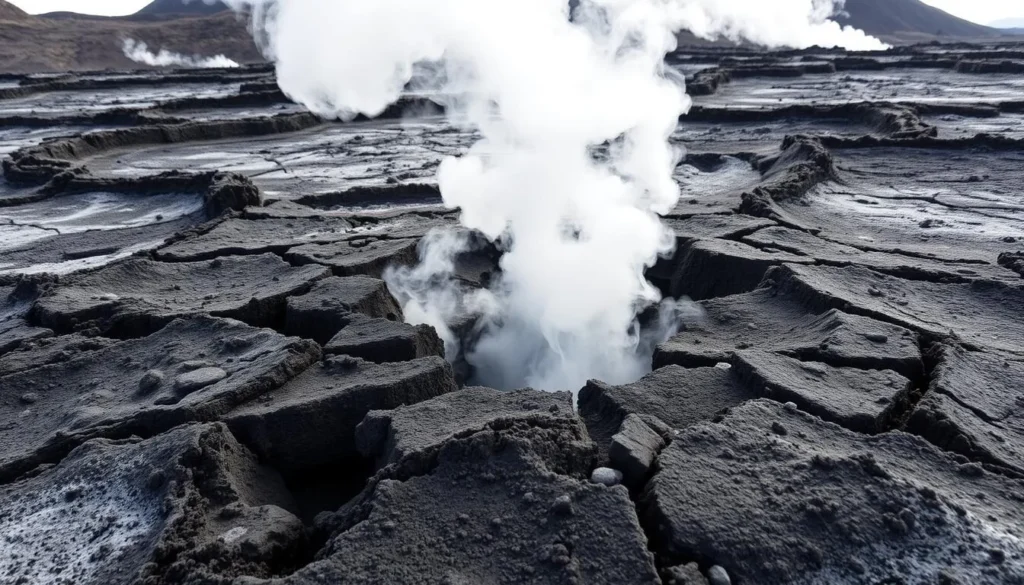
The Underground Fire
The main attraction is, of course, the underground coal seam fire that gives Burning Mountain its name. This natural phenomenon has been burning for at least 5,500 years and possibly up to 15,000 years, making it the oldest known coal fire in the world. The fire moves southward at approximately 1 meter per year.
As you approach the active fire zone, you’ll notice:
- Sulfurous smoke rising from fissures in the ground
- Dramatic changes in vegetation as you get closer to the fire
- Soil discoloration from the extreme heat
- Rocks transformed by the underground temperatures
Burning Mountain Walk
The 4 km (2.5 mi) return walking track is the best way to experience the reserve. The well-maintained path features:
- Informative panels explaining the geological and cultural significance
- Gradually changing landscapes as you approach the fire zone
- A viewing platform at the active site for safe observation
- Diverse flora adapted to the unique conditions
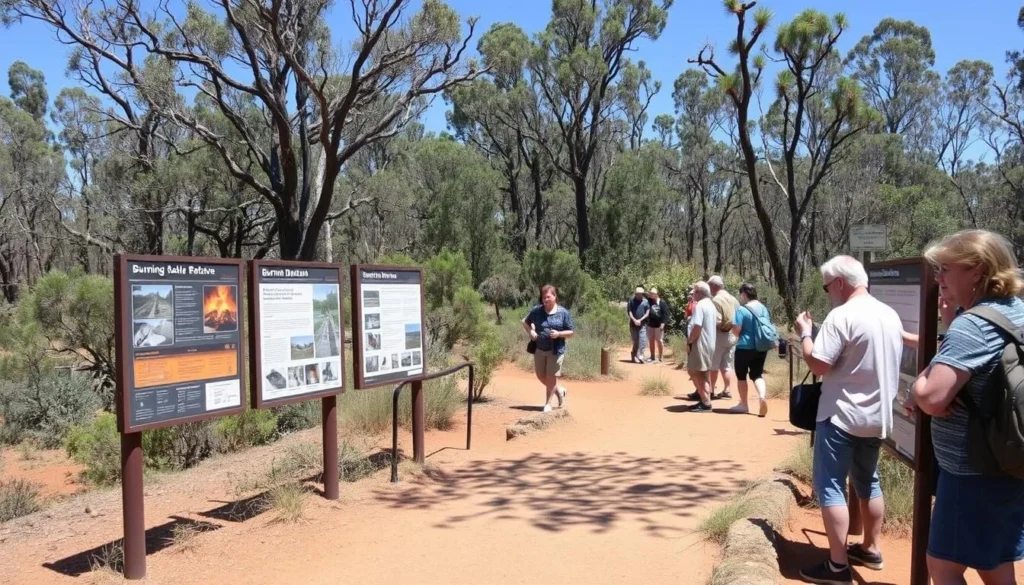
Aboriginal Heritage
The area holds significant cultural importance for the Wanaruah people, who have inhabited the region for thousands of years. According to Aboriginal legend, the mountain burns eternally due to the tears of a woman who was turned to stone while waiting for her warrior husband to return from battle.
Explore Burning Mountain with Expert Guides
Discover the fascinating geology and Aboriginal heritage of Burning Mountain Nature Reserve with knowledgeable local guides.
Nearby Attractions
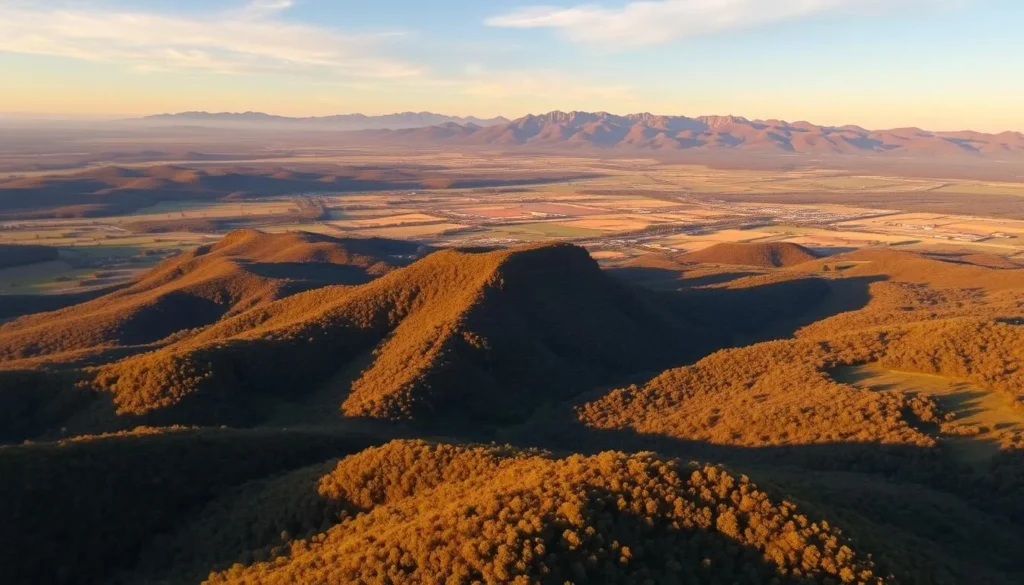
While Burning Mountain Nature Reserve itself can be explored in half a day, the surrounding Upper Hunter region offers plenty of additional attractions worth visiting:
Natural Attractions
- Wingen Maid Nature Reserve: Featuring dramatic rock formations and panoramic views
- Towarri National Park: Beautiful bushwalking trails and swimming holes
- Barrington Tops National Park: Ancient rainforests and diverse wildlife (1.5 hours drive)
- Lake Glenbawn: Water sports, fishing, and camping
Historic Towns
- Murrurundi: Charming historic buildings and artistic community
- Scone: Horse capital with equine attractions and heritage
- Muswellbrook: Mining heritage and cultural sites
- Denman: Gateway to the Hunter Valley wine region
Cultural Experiences
- Local museums: Discover the region’s pioneering history
- Art galleries: Featuring works by local artists
- Hunter Valley wineries: World-class wine tasting (1 hour drive)
- Country markets: Sample local produce and crafts
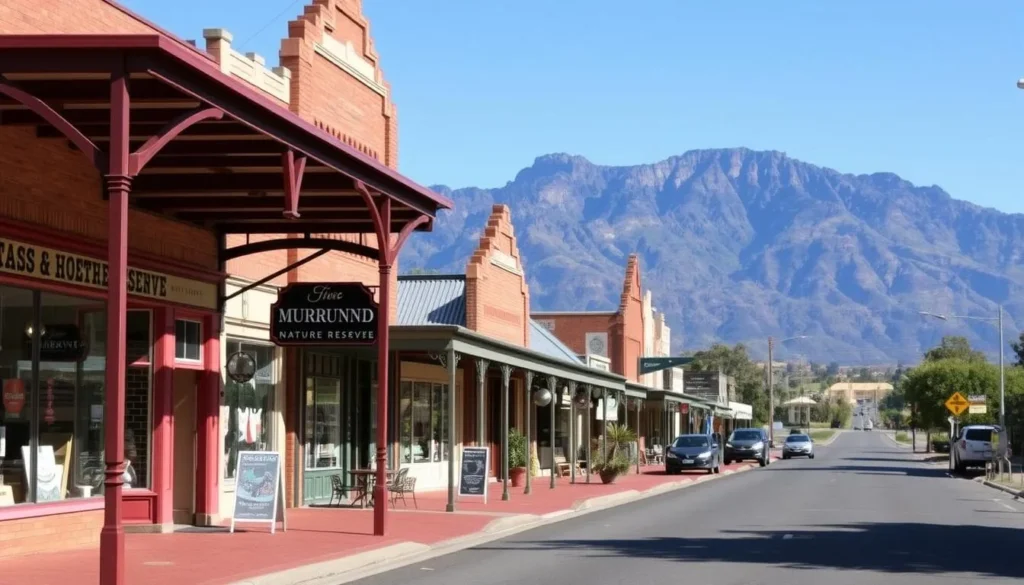
Practical Travel Tips
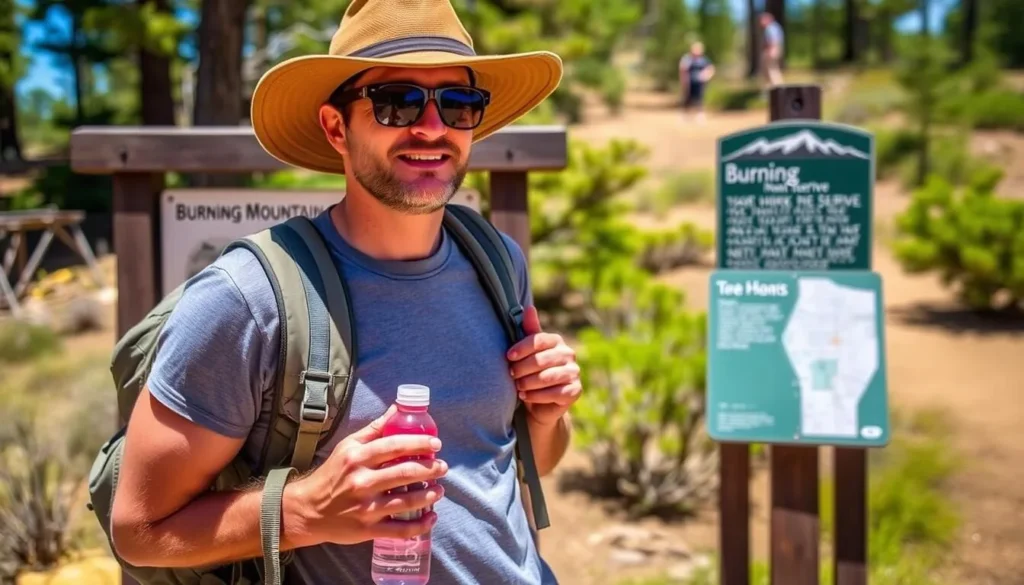
Essential Information
- Park fees: No entry fees apply to visit Burning Mountain Nature Reserve
- Opening hours: The reserve is open 24 hours, but daylight visits are recommended for safety
- Facilities: Basic picnic areas and toilets at the car park
- Mobile coverage: Limited and unreliable in parts of the reserve
- Emergency contacts: Save the number for NSW Parks (1300 072 757) and local emergency services
What to Bring
- Plenty of drinking water (no water available on site)
- Sun protection (hat, sunscreen, sunglasses)
- Sturdy walking shoes with good grip
- Weather-appropriate clothing (layers recommended)
- Insect repellent
- Camera for capturing the unique landscape
- Binoculars for wildlife spotting
- Snacks or picnic lunch
Safety Considerations
Important Safety Tips:
- Stay on marked trails at all times
- Do not attempt to approach the actual fire or vents too closely
- Be aware of uneven ground and potential subsidence
- Check for park alerts and fire warnings before visiting
- Inform someone of your plans if hiking alone
- Carry a first aid kit
Responsible Tourism
Help preserve this unique natural wonder for future generations:
- Take all rubbish with you when you leave
- Respect Aboriginal cultural heritage
- Do not remove rocks, plants, or other natural materials
- Keep noise to a minimum to avoid disturbing wildlife
- Use designated picnic areas only
Experience the Wonder of Burning Mountain
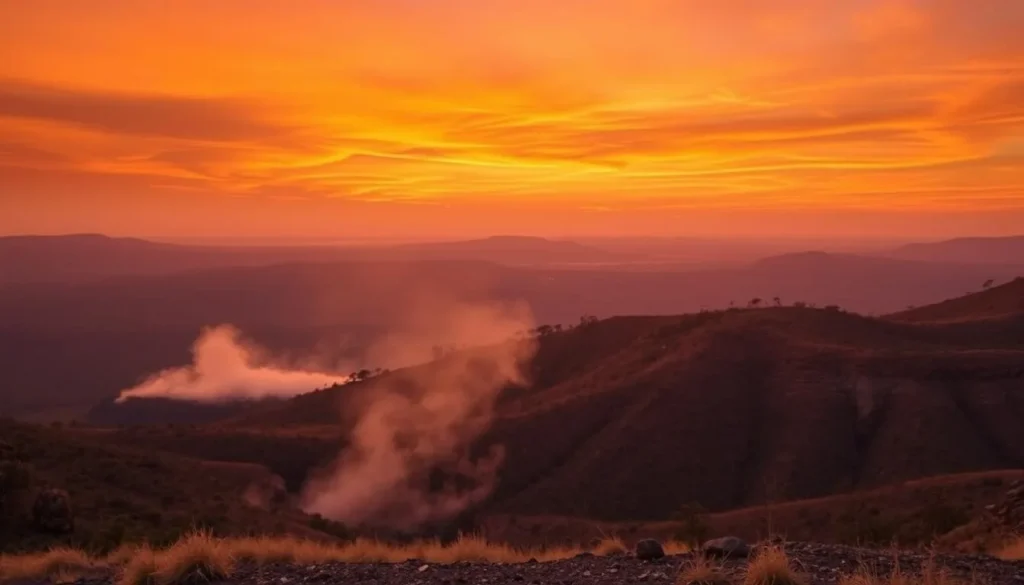
Burning Mountain Nature Reserve offers a truly unique natural phenomenon that can’t be found anywhere else in Australia. Walking the trail to witness the world’s oldest known coal seam fire is a fascinating experience that combines geological wonder, Aboriginal heritage, and natural beauty in one remarkable destination.
Whether you’re a geology enthusiast, nature lover, or simply seeking unusual attractions off the beaten path, Burning Mountain deserves a place on your New South Wales itinerary. The relatively short walking track makes it accessible for most visitors, while the scientific and cultural significance provides depth to what might otherwise be a quick stop.
As you plan your visit to this extraordinary natural wonder, remember that the journey through the changing landscape is as remarkable as the destination itself. Take your time, read the informative panels, and appreciate the rare opportunity to witness a mountain that has been burning for thousands of years—and will continue to burn long after your visit.
Ready to Explore Burning Mountain?
Start planning your adventure to one of Australia’s most unique natural wonders today!
The above is subject to change.
Check back often to TRAVEL.COM for the latest travel tips and deals.

